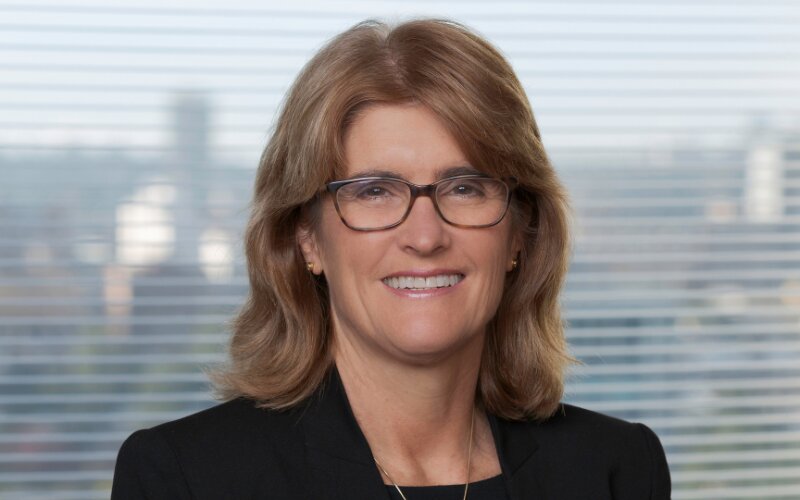Jordan Belfort. Warren Buffet. Michael Burry. Mark Baum. Goldman and Sachs. Gordon Gekko.
When you think about the world of investing, it’s littered with bros - real or fictional.
Most investment fund managers are men. Women only make up a third of board members of the top listed 300 companies on the ASX. Most of the big bank bosses are men. But just because men are overly represented in the investing and finance space, does it necessarily follow that they’re better at it?
How women invest
Here’s what we know about how women invest. According to the 2020 ASX Australian Investor Study, women typically have smaller, less diversified portfolios than men and are more risk-averse, preferring reliable returns. Women are also generally aware of fewer investment options and are more aware of the barriers that could stop them from investing, like fear of investment underperformance, not knowing what investments to select, and not knowing how much to invest.
The good news is that the report found women comprised 45% of all new investors in the 12 months to March 2020 - up from 31% among those who started five to 10 years ago. However, the gap between men and women who don’t invest is still very wide - 63% of women compared with 37% of men.
According to a survey by Fidelity, while more than half of Australian men agreed with the sentiment ‘Investing is for people like me’, only 34% of Australian women did. The survey also found that the finance industry is missing the mark when it comes to communicating with women. One in two women said communication around investment was ‘complicated’, and one in four described it as ‘intimidating’. Around 15% of women also said investment communications are tailored to men.
There’s no denying the fact that finance has traditionally been a male-dominated industry because, for generations, sexist constructs made the topic of money a huge taboo for women. After all, it wasn’t until 1974 that unmarried women could open a bank account in the US! So it’s hardly a surprise we feel less comfortable talking about finance than our male counterparts.
On a recent episode of our podcast Penny for Your Thoughts, Rachel Hopping from online investment platform Superhero said speaking about this ‘taboo’ is one of the biggest barriers holding women back from investing.
“I think it's quite common for men to be at the pub, or their mate's place and to bring up what they're investing in, and it’s less likely to be a topic of conversation when you're with your girlfriends. I don’t know why we can’t talk about it. I can guess - I think talking about money in general, whether that be salary or the gender pay gap is almost a bit of a taboo for women. We’re ‘Oh you know, don’t talk about money, that’s not ladylike, or that’s not feminine, do I look greedy if I’m talking about wanting to ask for a higher salary, or am I going to be seen as too aggressive or too assertive'?” Ms Hopping said.
“It’s probably a similar feeling that some of us get when we want to bring up investing. I think we need to accept that it’s okay not to know. When my friends have not known how to invest, it’s that fear of asking because you don’t want to come across as dumb or that you don’t understand - but you don’t understand and you really want to know!”
You only have to watch the nightly news or scroll through your news app to see that investing is often presented in a way that is intimidating and confusing - especially if like me, you’re not a numbers person. There are confusing graphs and endless jargon galore. All Ords, NASDAQ, ETFs…. wtf? In many ways, it can seem like a new language designed to exclude.

Fearless Girl on Wall Street. Image by Robert Bye, Unsplash.
But the good news is that’s changing. Ms Hopping said a rise in female-focused finance education platforms like She’s on the Money and Ladies Finance Club is leading to a rise in more women starting their investment journey on Superhero.
“The biggest thing that I've seen in terms of women getting into investing in finance has really been representation in the space. If there's no representation of you doing something, then you're much less likely to start doing it. Women have been, not excluded from the conversation, but the conversation hasn’t been had in a way that relates to women, or that women can relate to,” she said.
“The conversation has changed - things around money that are important to women are now also being highlighted as well. It allows women to feel included in the conversation and to make it relate to their lives and to their goals, and it definitely has led to more women coming onto the platform.
“I'd love to say it's 50-50 [split between men and women on the app]. We're not quite there, but we are seeing that needle move over time. So the longer that we're in the market, the more women we're seeing coming on, and the more that percentage is shifting towards a more balanced split between male and female.”
So, we know that women are underrepresented in the investing space and have a heightened awareness of the barriers that could stop them from investing.
The irony is that despite investing less, several research reports show that when we do invest, we’re better at it.
A 2021 Fidelity Investments analysis of more than 5 million customers over the last ten years found that women consistently outperform their male counterparts by an average of 40 basis points (0.40%) every year. Now that may not sound like a huge amount on its own, but over the course of ten, twenty, thirty years - that adds up.
A separate UK study by investment service Hargreaves Lansdown also found that women's investment portfolios outperformed men's by 80 basis points (0.80%). Again, on its own, that doesn’t sound like much, but over the course of 30 years, a woman’s investment portfolio would be 25% higher than a man’s.
A Wells Fargo report of its clients from 2016 to 2020 also found that women outperformed men, achieving higher returns while taking on less risk than men.
So, what are men doing that’s leading to their lower investment performance? It’s all down to behaviour - men are more likely to be overconfident and overactive.
Women are less impulsive investors
We know that men generally engage in more risk-taking behaviour than women, and the same applies to our investing preferences. Several studies have shown that women are more likely to be patient investors, favouring a long-term approach by developing a strategy and sticking to it, and pursuing less risky investments - and it’s paying off.
The Fidelity study I mentioned earlier found that “many of the characteristics some view as being inherently female are actually factors that may be helping women see strong returns on their investments.”
“Women are more likely to have their savings allocated in a more age-based allocation of investments than their male counterparts. In fact, looking specifically at Fidelity retirement savings accounts over the last three years, the percentage of women allocated appropriately for their age has increased by approximately 40 percent,” the report said.
“Furthermore, fewer women have their savings fully invested in equities than men (which could represent too much risk and not enough diversification); and women are more likely to invest in target date funds, ensuring they are well diversified.”
An American study by Capital.com that analysed the behaviour of 2,000 traders for 18 months to July 2021 found that female investors used stop losses (a stop loss is used as a risk management tool to limit losses) more often than men, with 43% of women traders using a stop-loss in more than half of their trades, compared with 35% of men.
The research also found that men tended to deposit bigger sums of money than women.
Head of artificial intelligence at Capital.com Arty Rusetski said ego can often be the downfall of many male investors.
“Ego is an issue in trading and the exuberance of the market coupled with a winning streak can make even an experienced investor feel almost invincible,” Mr Rusetski said.
“Our research shows that female investors do a lot of analysis and record keeping. They have a slight advantage here because ego does not get in the way for them as much as for men. This has been demonstrated by the fact that women are generally more diligent as they tend to respect their stop losses more often.”
Women trade less frequently and check their investments less
Another contrasting trait between men and women investors is how frequently we trade.
A UK report by Warwick Business School found while women investors traded nine times each year on average, men traded 13 times. A separate UK report by Hargreaves Lansdown found women traded shares 49% less frequently than men and traded funds 67% less.
Back on Australian shores, the ASX Australian Investor Report found that women are more inclined to set a strategy and hold to it, reviewing their portfolios less often and making fewer changes in response to market movements, with 59% of women leaving their portfolios unchanged in the three months to May 2020.
According to the report, women are no more likely than men to crystallise losses by selling growth investments during a downturn. When asked how they would respond to a sudden 20% market fall, 42% of women said they would be concerned but would wait to see if conditions improved. Only 20% said they would look to switch risky assets for more conservative investments or for cash - a similar proportion to men.
We also tend to favour a ‘set and forget’ approach. The report found women investors review their portfolios less regularly, with 44% saying they review their investments quarterly or less often, compared to 28% of men, who are much more likely to check their portfolios every day (20% versus 8% of women).
Some might argue this suggests women are less engaged with their investments than men, but it’s consistent with a group that prefers to set a well-considered strategy and stick to it. This was especially evident during the COVID-induced market fluctuations when only 41% of women made changes to their portfolios compared with 63% of men. But those women who did make changes responded in a similar way to men by investing all their spare cash and increasing their allocation to Australian direct shares, rather than selling their investments.
Closing the gender investment gap
So if we’re better investors than men, it begs the question: why aren’t more of us investing?
Unfortunately, the deck still remains stacked against women when it comes to investing because of the gender pay gap. In Australia, the national gender pay gap on base salary is 13.3% according to the Australian Bureau of Statistics (ABS). For every $1 a man makes on average, Australian women make 87 cents. While this gap is a record low, we still have a long way to go before we achieve gender pay parity.
Because of the gender pay gap, women have less money to invest than men, which means we need to invest more of our paychecks to be on par with men. Couple this with the fact that we take more time out of the workforce to raise children and be caregivers for elderly parents and that we’re predicted to outlive men by half a decade - we quite literally need more money to survive. Yet we’re still retiring with less superannuation than men, creating an uneven playing field that makes for a pretty bleak financial outlook.
A Fidelity International study found only 35% of Australian women said they ‘probably’ had enough for retirement, compared with 65% of men. You can see the harm in this inequity when you look at the average superannuation balance for men and women. According to the Association of Superannuation Funds of Australia (ASFA), the median man aged 60-64 has $178,800 in superannuation, while the median woman has $137,050, or about 23% less.
The report also found that less than half (48.1%) of women said they had any savings or investment products outside of super, compared to more than half of men. Instead, 50% of women felt they would be better off putting their money into a typical savings account than investing it elsewhere. Why? Because women typically hold the purchasing power in households so are (generally) the ones responsible for paying for childcare, groceries, and the like. But women also don’t feel empowered to invest because they don’t feel like the investment industry is tailored to them. You can’t be what you can’t see. If all you’re seeing in the investment space is the Jordan Belforts and Warren Buffets of the world, can we really be surprised that women don’t feel engaged?
Gender norms and social constructs take time to change, but there’s a generation of female role models in the finance space who are coming through and transforming the way women think about money. Victoria Devine, Queenie Tan, Tash Invests, Molly Benjamin, Emma Edwards, Melissa Browne, Betsy Westcott - to name just a few, are showing women what’s possible and employing us to rise up and take control of our financial futures. It’s also up to us to empower ourselves with knowledge. We're behind the eight ball enough as it is, take this as a sign to not let yourself fall further behind.
Advertisement
Need somewhere to store cash and earn interest? The table below features savings accounts with some of the highest interest rates on the market.
Provider | |||||||||||||
|---|---|---|---|---|---|---|---|---|---|---|---|---|---|
| 4 | 0 | 0 | 0 | $product[$field["value"]] | $product[$field["value"]] | $product[$field["value"]] | More details | ||||||
| FEATURED | High Interest Savings Account (< $250k)
| ||||||||||||
High Interest Savings Account (< $250k)
| |||||||||||||
| 4 | 0 | 0 | 0 | $product[$field["value"]] | $product[$field["value"]] | $product[$field["value"]] | More details | ||||||
Savings Account (Amounts < $250k)
| |||||||||||||
Savings Account (Amounts < $250k)
| |||||||||||||
| 0 | 1000 | 0 | $product[$field["value"]] | $product[$field["value"]] | $product[$field["value"]] | More details | |||||||
| FEATURED | Saver Account (<$250k)
| ||||||||||||
Saver Account (<$250k)
| |||||||||||||
| 0 | 200 | 0 | $product[$field["value"]] | $product[$field["value"]] | $product[$field["value"]] | More details | |||||||
| No monthly fees | Save Account
| ||||||||||||
Save Account
| |||||||||||||







 Jacob Cocciolone
Jacob Cocciolone
 Harrison Astbury
Harrison Astbury








